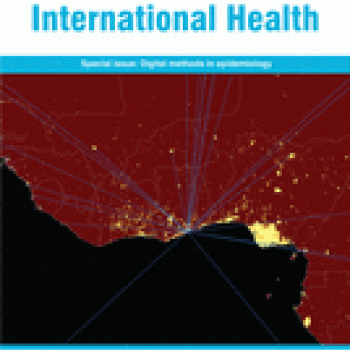Publication Information

Background Injuries are an emerging public health issue among children worldwide, and one of the leading causes of disability-adjusted life years lost for children aged 0-14 years. Few studies, particularly in low- and middle-income countries, have analysed characteristics and risk factors for these injuries.
Methods: This study examined the occurrence and risk factors of serious non-fatal injuries in children aged 7-9 years (n=1820) from Andhra Pradesh, India. Logistic regression models were used to explore potential risk factors for these injuries.
Results: Based on a 3-year recall period, 336 (18.5%) children reported serious non-fatal injuries. Incidence was higher among males (209/971; 21.5%) compared to females (127/849; 15.0%). Of the most serious non-fatal injuries reported, falls (n=186, 55.4%) were the major cause of injuries, followed by road traffic injuries (50, 14.9%), and assaults/blows/hits (26, 7.7%). Twenty children (6.0%) did not fully recover from their injuries, and 14 (4.2%) had long-term health problems as a result of their injuries. The logistic regression analyses indicated that being male (AOR 1.59; 95% CI 1.25?2.05), in poor health (AOR 2.50; 95% CI 1.88?3.31), and having a caregiver with low education (AOR 1.53; 95% CI 1.15?2.05) were associated with an increased risk of non-fatal injury.
Conclusions: Urgent attention is needed to reduce child injuries and address risk factors according to local context.
Keywords: Child; India; Non-fatal injury; Risk factors; Young Lives project
Article written using Young Lives data from the UK Data Archive by researchers from the School of Population Health, University of Queensland and the Australian Development Agency for Statistics and Information Systems.
Reference
Erika Kataoka, Mark Griffin and Jo Durham (2015) The Characteristics of, and Risk Factors for, Child Injuries in Andhra Pradesh, India: the Young Lives project, International Health, 7.6:447-454, early online publication. available on the journal website.

Background Injuries are an emerging public health issue among children worldwide, and one of the leading causes of disability-adjusted life years lost for children aged 0-14 years. Few studies, particularly in low- and middle-income countries, have analysed characteristics and risk factors for these injuries.
Methods: This study examined the occurrence and risk factors of serious non-fatal injuries in children aged 7-9 years (n=1820) from Andhra Pradesh, India. Logistic regression models were used to explore potential risk factors for these injuries.
Results: Based on a 3-year recall period, 336 (18.5%) children reported serious non-fatal injuries. Incidence was higher among males (209/971; 21.5%) compared to females (127/849; 15.0%). Of the most serious non-fatal injuries reported, falls (n=186, 55.4%) were the major cause of injuries, followed by road traffic injuries (50, 14.9%), and assaults/blows/hits (26, 7.7%). Twenty children (6.0%) did not fully recover from their injuries, and 14 (4.2%) had long-term health problems as a result of their injuries. The logistic regression analyses indicated that being male (AOR 1.59; 95% CI 1.25?2.05), in poor health (AOR 2.50; 95% CI 1.88?3.31), and having a caregiver with low education (AOR 1.53; 95% CI 1.15?2.05) were associated with an increased risk of non-fatal injury.
Conclusions: Urgent attention is needed to reduce child injuries and address risk factors according to local context.
Keywords: Child; India; Non-fatal injury; Risk factors; Young Lives project
Article written using Young Lives data from the UK Data Archive by researchers from the School of Population Health, University of Queensland and the Australian Development Agency for Statistics and Information Systems.
Reference
Erika Kataoka, Mark Griffin and Jo Durham (2015) The Characteristics of, and Risk Factors for, Child Injuries in Andhra Pradesh, India: the Young Lives project, International Health, 7.6:447-454, early online publication. available on the journal website.

